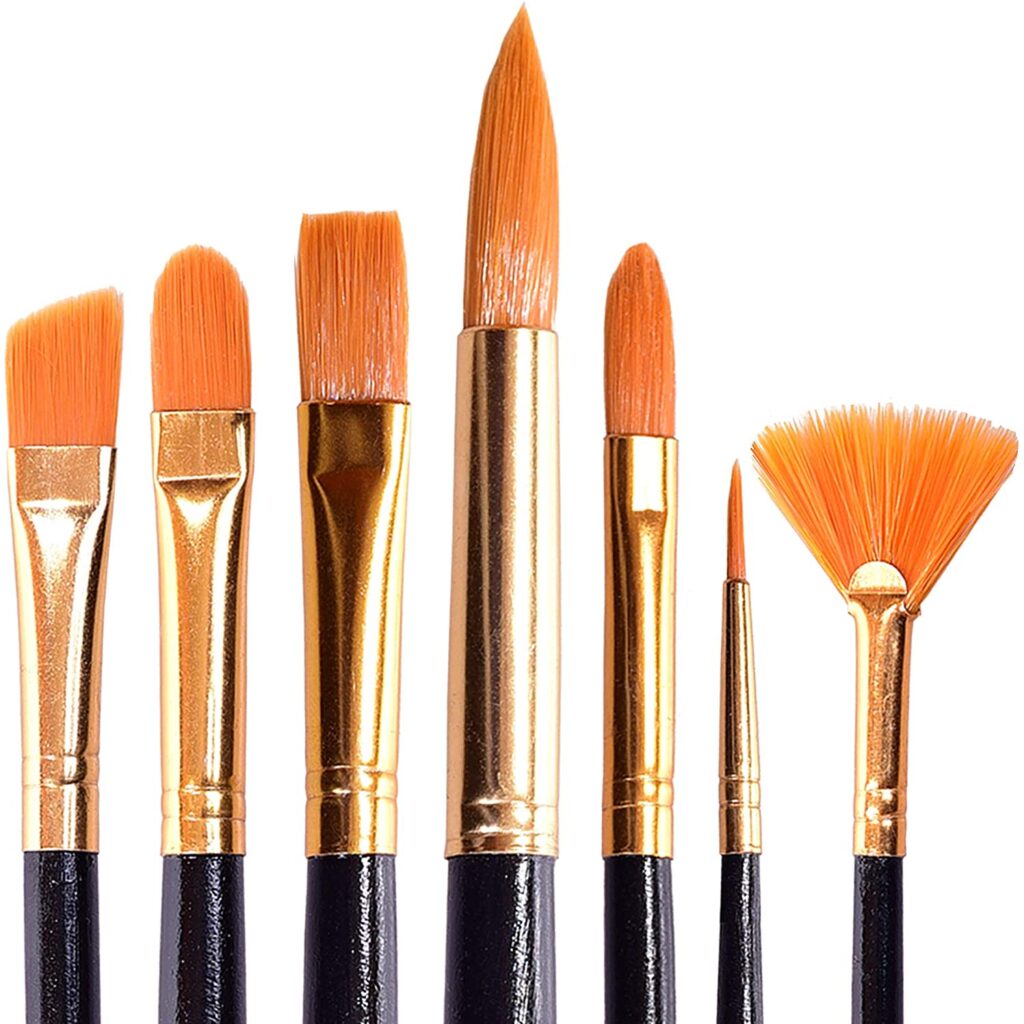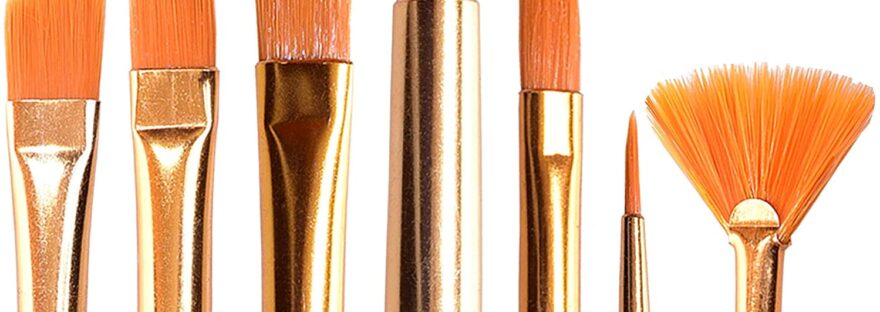
The number and length of the bristles on paint brushes are what primarily determine it’s quality and spreadability. If a brush is dipped 1/3 to 1/4 of it’s length into a can of paint, a good brush will ideally pick up the perfect amount of paint and spread it on a surface in a film that is smooth and uniform and absent of any drips, dips, or brush marks.
Professional painters and contractors are very particular about using a quality brush and therefore look for certain characteristics when selecting one. A good painter will require a brush that has lots of “body” and reasonably long bristles that are capable of picking up a good load of paint and spreading it uniformly across a surface without dripping or running out.
Paint brushes typically come in two forms, synthetic, and natural. Synthetic brushes are usually made from products such as nylon, while natural refers to bristles from an animal source. A good quality brush of either type will exhibit “flagged” ends, or split ends, occurring naturally in animal source bristles, and being created in the artificial ones.
If you are applying a watery, or free flowing product the best brush to use would be one that is softer and has less spring. Brushes in this category are usually trimmed to a wedge shape end known as a chisel edge and can be made from a variety of animal pelts or artificial fibers. The chisel edge allows the applicator the ability to lay a line of paint with precision without pulling a bead of product along. Another feature of the chisel edge is it’s ability to allow the painter to perform one single stroke without the need to brush-out or re- work the paint in a single, one directional brush stroke.
A simple and easy way to determine the quality of paint brushes is by spreading the bristles in a fan like fashion with your fingers and thumbs. This test will determine density and body of the bristles and whether they are inserted in the brush base/block in three or two rows. Once the bristles have been parted they should bounce back into place upon release. The majority of bristles should return to their original place. If the odd strand is loose or astray that is OK. Generally the best quality brushes have three rows of bristles anchored in the body or block of the paint brush.
When you are finished with your paint brush it is very important to clean it immediately and not allow any materials to dry on the bristles as this will spoil the characteristics of the brush. Be sure to clean the correct brush with the correct solvent or cleaner which can be determined at the store that you purchase your paint supplies at.
Some brushes are intended to only be used once and then thrown away, however for the more expensive brush you will want to take some steps to prolong it’s life when it comes time to store it. The first step is to ensure that it has been thoroughly cleaned and even brushed out with a wire brush, then it should be wrapped tightly in glossy newspaper or even a plastic bag in a manner that ensures that all bristles are laying flat and that as much air as possible is removed.
Thank you for reading this article! If you have any further questions about this topic please contact us.

